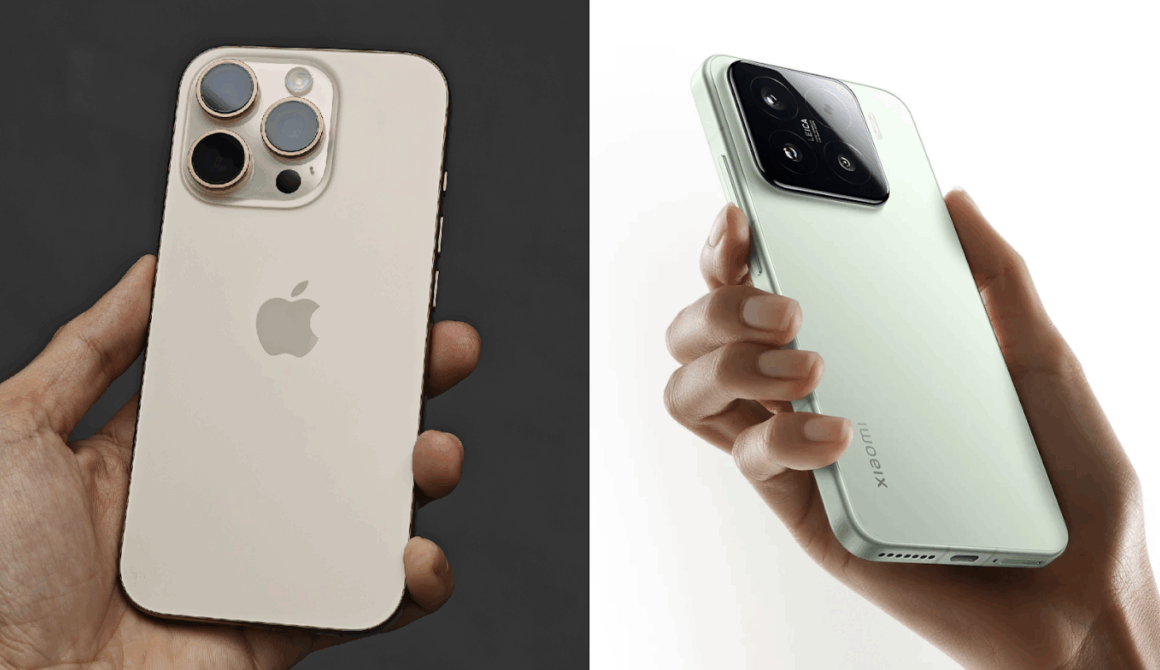In summer 2023, Xiaomi Corp founder, chairman, and chief executive Lei Jun expressed the company’s goal of becoming the world’s largest smartphone vendor and – eventually – surpassing Apple.
“Only by benchmarking with the iPhone can we stand a chance to catch up and beat it one day,” the executive said.
Two years later, Xiaomi’s growth has been explosive. While the brand has been known mainly for manufacturing decent budget phones in the past, it is now creating phones that are being compared to Apple’s premium smartphones.
The two companies’ flagship smartphones – the Xiaomi 15 Pro, released in October 2024, and the Apple iPhone 16 Pro, released in September 2024 – are on relatively equal footing. Has the budget phone manufacturer finally caught up?
Type in the Xiaomi 15 Pro and the iPhone 16 Pro into popular phone comparison tools, and the verdict will often be that the Xiaomi 15 Pro, at a significantly lower price point than the iPhone 16 Pro, is the superior choice. Among the reasons listed on Versus, the Xiaomi 15 Pro has:
- 1.72x more battery power.
- 13.48% higher pixel density.
- 38.89% more megapixels.
- 6.83% bigger screen size.
- 1.8x faster CPU speed.
Another popular phone comparison site, NanoReview, appears equally optimistic about the Xiaomi 15 Pro. According to this site, Xiaomi’s phone:
- Supports higher wattage charging.
- Allows for slow-motion recording at 1920 FPS.
- Has a 47% better performance on the AnTuTu Benchmark rating.
The only reason listed to consider the Apple 16 Pro is its 19% faster single-core performance in the Geekbench test.
To top things off, the Xiaomi 16 Pro is rated 69.4% higher when it comes to value-for-money ratio, at the price of 699 USD (Xiaomi 15 Pro, 12 GB RAM and 256 GB memory) vs. 999 USD (Apple iPhone Pro 16, 8 GB RAM and 128 GB memory).
If you stop there, only considering these technical specifications, Xiaomi really does seem to have surpassed Apple. But not so fast – numbers alone don’t tell the whole story.
The battery size is a good example of a deceiving spec. The Xiaomi 15 Pro does indeed have a bigger battery: a 6100 mAh battery vs the iPhone 16 Pro’s 3582 mAh battery. But that doesn’t necessarily translate to a longer battery life. Since each app on an Apple device is optimized for that device specifically, it can be more energy-efficient. The more versatile Android operating system is also less specialized – less optimized –and hence drains battery quicker. Even with a smaller battery, Apple’s phone can deliver a longer battery life.
Processors are also interesting to look at. With the A18 Pro chip specifically designed for high-end Apple models, it makes more efficient use of resources and ultimately performs better than the Xiaomi 15 Pro, which features the also impressive but more generic Snapdragon 8 Elite.
When it comes to build quality, reliability, and support, Apple’s phones also fare a lot better. When you buy an iPhone, you buy the premium Apple experience. That’s a stark difference from buying a Xiaomi phone, where you’re more or less on your own after the purchase.
On top of that, Xiaomi phones come with ads, and you can’t select an option without advertising – not even if you were willing to pay more for it.
If you’re looking to game, both the Xiaomi 15 Pro and the iPhone 16 Pro are good choices. The Xiaomi has a slightly bigger screen, but the visual experience delivered by the iPhone is just as impressive and smooth, both with 120Hz refresh rates.
Both casual gaming and more intensive gaming can be enjoyed on these phones. They’re both just as suitable for enjoying a game at Tether casinos, for instance. Although apps need to be in the Apple Store to be installable on iOS, most online casinos offer a mobile site that works just as well as an app would.
The two phones are also suitable for more intensive gaming, like a round of Call of Duty Warzone: Mobile or Fortnite.
For those looking for a phone with a good camera, both the Xiaomi 15 Pro and the iPhone 15 Pro more than deliver. Both make use of triple cameras and support 5x optical zoom.
The most obvious difference between the two phones is the operating system. The iPhone runs iOS 18 and syncs seamlessly with other products in the Apple Ecosystem. We’re also seeing new things with the latest version of iOS, such as AI features powered by Apple Intelligence.
Xiaomi 15 Pro runs Xiaomi’s own HyperOS based on Android 15. Here, too, you’ll find a range of apps that can sync with the device as well as AI-enhanced features. But, as previously mentioned, HyperOS also means ads in the operating system itself.
In summary, Xiaomi’s new flagship phone is undoubtedly impressive, and Xiaomi has arguably caught up with Apple. While the two are competitors in one sense, they’re also just different phones that don’t need to be equal on every level.
Xiaomi phones impress with high specs for a low price that Apple can’t, and doesn’t try to, compete with. However, there are also things that Apple does decisively better. And while Xiaomi temporarily overtook Apple in phone sales in August 2024, Apple still holds the crown – for now.








